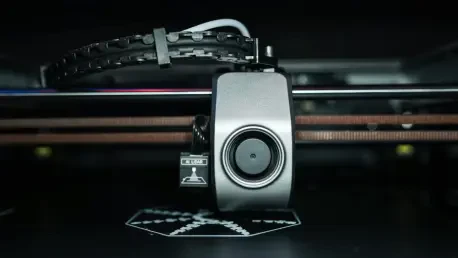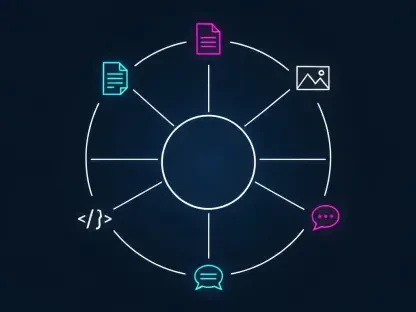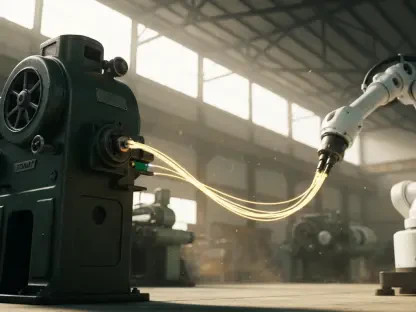In an era defined by rapid technological innovation, 3D Acoustic Ranging has emerged as a groundbreaking advancement in robotics. By utilizing sound to detect, identify, and interact with objects and humans, this auditory sensing technology broadens the potential for robotic applications significantly. Distinctly unique in its use of a single microphone, 3D Acoustic Ranging surpasses traditional systems that rely on multiple sensors, thus offering a streamlined approach noteworthy for its precision and adaptability, especially in challenging environments.
Current Landscape of 3D Acoustic Ranging
Growth Trends and Adoption
A discernible surge in the application and acceptance of 3D Acoustic Ranging is evident in various sectors. Data from recent studies reveal that this technology is being integrated swiftly into industrial processes worldwide, driven by its promise of efficiency and cost-effectiveness. The transition from complex sensor arrays to singular acoustic devices is becoming a hallmark of modern robotics. Industries are increasingly embracing this change, indicating a shift toward smarter and more agile technologies that align with the evolving demands of manufacturing and automation.
As of late, robust adoption is observed across industries such as manufacturing, logistics, and healthcare. Prominent corporations focusing on automation and human-robot interaction have championed 3D Acoustic Ranging as a core component, owing to its ability to function efficiently in variable conditions. This broader acceptance underscores the technology’s reliability and the industries’ readiness to invest in innovative solutions that promise long-term benefits.
Real-World Applications
The applicability of 3D Acoustic Ranging spans an impressive array of use cases. Companies like those involved in heavy machinery and logistics have begun to incorporate this technology to enhance communication and safety standards. For instance, a renowned manufacturer has successfully deployed robots equipped with 3D Acoustic Ranging for real-time monitoring of their production lines, reducing downtime and improving overall operational throughput.
Case studies illuminate significant advancements in sectors like disaster management, where these systems allow robots to pinpoint sounds indicative of potential hazards, including gas leaks or structural failures. The versatility and adaptability of the technology ensure that it is not merely an augmentation but an essential asset in various dynamic and demanding environments.
Expert Perspectives on 3D Acoustic Ranging
Renowned voices in the field of robotics herald 3D Acoustic Ranging as a pivotal innovation. Experts consistently highlight its dual capability of facilitating autonomous navigation and improving safety protocols. Authorities in the field observe how this sound-centric approach lowers barriers that traditionally restrict robot interaction, suggesting a profound reorientation in how machinery and sound communicate.
However, challenges remain, primarily in fine-tuning the technology for diverse contexts. Experts note that ongoing calibration and context-specific adjustments are necessary for precision and efficacy. As the technology matures, these challenges are expected to diminish, paving the way for more refined applications and comprehensive integration into existing systems.
Future Prospects and Implications
Future developments in 3D Acoustic Ranging promise even greater integration and functionality across industries. Anticipated advancements include enhancements in recognition accuracy and communication efficiency. Robotics equipped with this technology could likely become more intuitive, aligning closely with human communication models. The potential for expanded use in highly automated scenarios is vast, pointing toward adaptive systems capable of independent problem-solving and anomaly detection.
The broader ramifications include reshaping safety standards in manufacturing plants and revolutionizing logistics operations by facilitating seamless coordination among autonomous machines. However, as with any nascent technology, the caution surrounding data privacy and security concerns must be addressed. Balancing these matters with innovation is crucial to ensuring responsible deployment.
Conclusion and Call to Action
Reflecting on the trajectory of 3D Acoustic Ranging, it is clear that this innovation has significantly influenced the landscape of robotics. Embracing this technology invites substantial advancements in efficiency and safety across various sectors. The unique capability of a single-microphone system to enhance interaction opens up new dimensions for robotic applications. As the world continues to automate, the opportunities for refining and expanding this groundbreaking technology are abundant. Stakeholders should prioritize research and collaboration to explore its full potential, ensuring that 3D Acoustic Ranging continues to lead the way toward an increasingly interconnected future.









